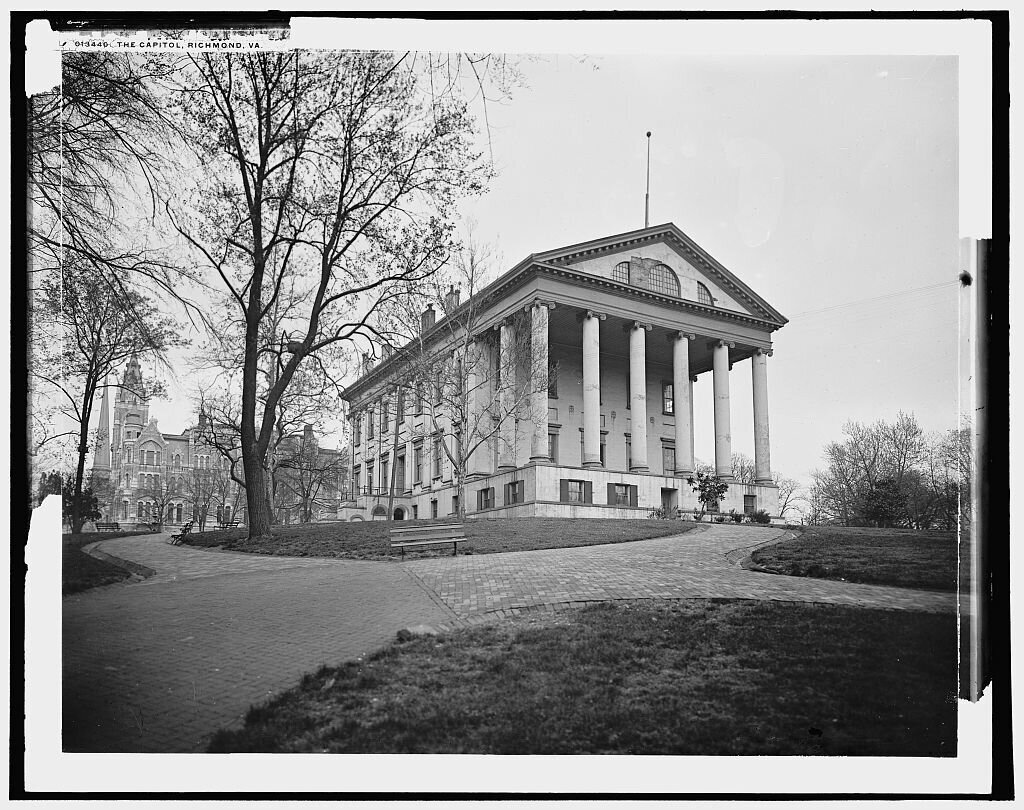Landmarks sites
The following five landmark sites are central to our program. Each landmark tells the story of modern school desegregation and allows teachers to interact with individuals who experienced the struggle for racial equality firsthand, which is glossed over in the current K-12 curriculum.
Each site also allows the teachers to explore important primary documents such as memoirs, court briefs, voice recordings, and related artifacts representing the complexities of this subject. Sessions with top scholars of school desegregation in Virginia along with these experiences allows the teachers to learn how to use various archives to research the history of school desegregation—many in their own districts, or online—and to develop effective lessons drawing from their experiences and findings.
Below are the compelling questions that guided us to select and organize each site. We also present each site with guiding questions that teachers would like to explore with students and respond to compelling questions.
Why should we care about Brown v. Board of Education and school desegregation in Virginia?
What are the intended and unintended consequences of school integration? What are the legacies that we experience in the present day?
Virginia State UniversityVirginia State University was the first public institution of higher learning for African Americans in Virginia, and it served as an important training ground for African American educators and administrators throughout the Jim Crow Era. We will interact with scholars of this time period and will tour the VSU campus including Vawter Hall, the second oldest building on the campus, constructed in 1908 and used as a science building and a dormitory for female students, as well as the exterior of Azurest South, which was the home and work studio of one of the first black female architects in the nation.
More information can be found at vsu.edu.
Why did African Americans in Virginia seek the end of segregated education?
How did school desegregation in Virginia impact African American education and educators?
How has your understanding of African American education changed after visiting the school and viewing its primary sources? Do you have similar stories of school desegregation in your locality?
Robert Russa Moton MuseumAs the home of the 1951 student walkout that led to one of the Brown v. Board of Education suits, the Moton School is a National Historical Landmark for school desegregation. Later, when the public school system was closed, Moton became part of the Prince Edward Free Schools, a Robert F. Kennedy backed temporary school system for black students. Now a museum, Moton has exhibits of the strike, the 1951 lawsuit, and the 1959 lockout to prevent integration.
More information can be found at motonmuseum.org.
Why is the story of school desegregation in Prince Edward County important?
How does the story of Prince Edward County fit into the story of school desegregation in Virginia?
How has your understanding of African American education changed after visiting the museum, listening to those who experienced school desegregation there, and viewing its materials? In your locality, do you have any historical places and museums for you to visit and understand African American education?
Virginia Civil Rights Memorial The Virginia Civil Rights Memorial commemorates the struggle for African-American rights in Virginia. Depicted in the Memorial is Barbara Rose Johns Powell, a 16-year-old student who attended the R.R. Moton School in Farmville, Virginia. She led students in a protest about the intolerable conditions of the school which developed into the court case Davis v. County School Board of Prince Edward County (1952). This case joined with four other cases to form the Supreme Court case Brown v. Board of Education of Topeka.
More information can be found at vacivilrightsmemorial.org
How did the status of school desegregation change in the early 1960s?
How has your understanding of African American education changed after visiting the city and viewing its historical sites? How did your experiences today impact your feelings about the commemoration of historical sites and figures?
Virginia State CapitolThe Virginia State Capitol was designed by Thomas Jefferson and completed in 1788. It is the eighth building to hold the Virginia legislature, which is the oldest legislative body in the Western Hemisphere. The Capitol building sits on Capitol Square, housing many monuments including the Virginia Civil Rights Memorial. This unique building saw Virginia leadership declare Massive Resistance against the Federal decision to integrate schools. It now serves as a landmark for history and for the continual progress of the Commonwealth.
More information can be found at virginiacapitol.gov.
How did the process of school desegregation proceed in the South?
How did political and judicial changes affect the process of school desegregation?
New Kent CountyNew Kent County is home to two historic schools essential to the landmark U.S. Supreme Court case, Green v. County School Board of New Kent County (1968). During the era of segregation, African American students who resided in the east side of the county were bused across the county, passing the New Kent School, then an all-white school, on their way to attend the George W. Watkins School, the county's all-black school. The head of the local NAACP filed a lawsuit against this arrangement in 1965, leading to the Green decision, which has been called the “most important [U.S. Supreme Court] decision regarding school desegregation since Brown.
How did the status of school desegregation in the South change in the late 1960s, and why?
What were the pros and cons of school integration for African Americans in the South and elsewhere?
How has your understanding of African American education changed after visiting the county, listening to those who experienced school desegregation there, and viewing its historical sites? What is the significance of Green v. County School Board of NKC? How did the case change the status of school desegregation in the South in the late 1960s?





